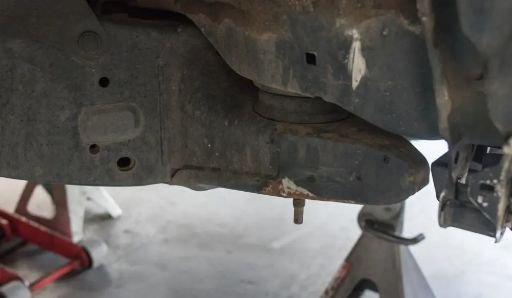If you look at other ladder framed vehicles, you notice that the frame width match's the engine width. Framed vehicles really weren't built with comfort or handling in mind. Supporting the body on top raises the weight center and you cant go too much wider with the body before you start creating body roll. The suspension is mounted to the frame, not body. This is where we deal with body roll.
If you look at real narrow frames like the old Jeeps you see they added side mounts to the frame that stuck out quite a bit but the body sits high. The older SUV's they brought the outer edge of the body down slightly to cover the top of the frame but that was all.
Looking at your picture, the body is supported lower. This will improve the body roll slightly and as
@Lanlubber mentioned, hides the frame for ascetics. One can argue that moving the body down wont make a big difference. This is true but, its all the little things added together is where you see the change.
Structurally, your not going to change anything by trimming the mount. Just make sure you weld a cap over the hole and seal it well. If that was a point that flexed, it could be an issue. On my old TJ, the rear shocks were at the wrong angle (thanks Jeep). I had to move them outward at the top. That meant notching the frame and mounting the shock almost in the middle of the frame. The frame did its flexing about 14 inches in front of the shock so this wasn't a stress point.
An observation on my end based on a lifetime in this industry, just because a manufacture did something, doesn't mean its correct. Years ago I stopped asking "why did they design it like this", "it doesn't work". The nice thing about Toyota is, most of the engineering is correct. For this reason, I stopped building Jeeps and went back to Toyota.



